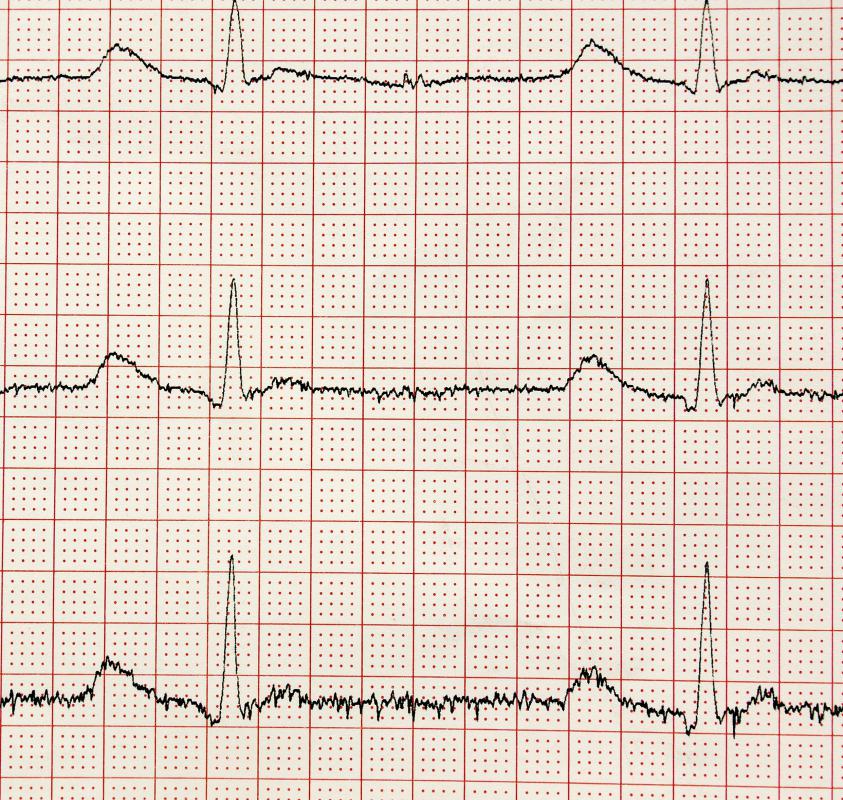At WiseGEEK, we're committed to delivering accurate, trustworthy information. Our expert-authored content is rigorously fact-checked and sourced from credible authorities. Discover how we uphold the highest standards in providing you with reliable knowledge.
What are the Different Types of EEG Electrodes?
Electroencephalogram (EEG) electrodes are placed around the head region in order to gather electrical impulses from the brain and direct these to a type of machine that is used as a diagnostic tool for analyzing brain activity. This brain activity measurement is recorded by a technique known as encephalography. The EEG electrodes are manufactured in several types, including disposable electrodes, reusable electrodes, headbands or caps, and needle electrodes.
Disposable EEG electrodes are widely used, since they can be quickly and easily applied. These electrodes are connected by snapping them onto a “lead” cable or wire that connects to a recording machine. There are many fairly inexpensive varieties, which are usually shaped like a flexible disk that is gluey and contains a central snap made of silver-silver chloride. Some contain a semiliquid gel around the snap area to enable it better conduct impulses to the machine leads. They have the disadvantage of having a relatively large size and reduced ability to stick within regions with a lot of hair. Some disposable electrodes use salt water — or saline — instead of gel, and they are anchored by means of snapping or clipping to a headband or cap.

Reusable EEG electrodes are not as large as the disposables, and this gives them an advantage in that they are able to be placed closer to the skin in areas with a lot of hair. The disks can be made of gold, silver, or tin, since all of these conduct current easily. They are used with headbands or caps, and they need to be cleaned carefully after each use. They are more costly initially than are disposable electrodes, however this cost tends to even out over time, since they are quite durable.

Disposable or reusable EEG electrodes can be attached to caps or headbands by snapping or clipping them to sensor locations embedded in the caps. Cup-shaped or disk-shaped electrodes are common types. The electrode caps are generally used when large numbers of electrodes are required, such as when using biofeedback machines and neurofeedback machines. Caps or head wraps are also used with ambulatory EEGs — useful for monitoring epileptic activity — with monitoring time extended over a period of several days in conjunction with gel-anchored electrodes and a portable computer to which the leads are attached.
Another form of electrode is in the form of a needle that punctures the skin, called a subdermal needle. These EEG electrodes can be either disposable or reusable. They are relatively expensive and are mainly used as diagnostic aids during surgery.
AS FEATURED ON:
AS FEATURED ON:














Discuss this Article
Post your comments